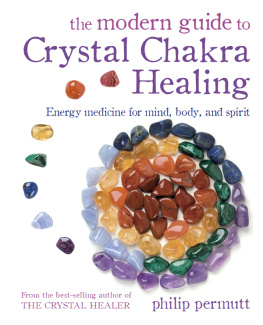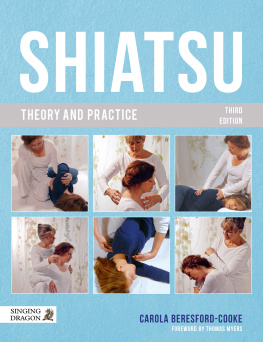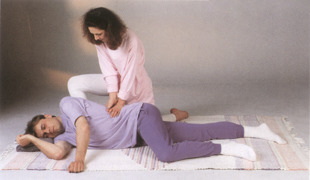
THE BOOK OF SHIATSU
A Complete Guide to Using Hand Pressure and Gentle Manipulation to
Improve Your Health, Vitality, and Stamina
PAUL LUNDBERG

Simon & Schuster
New York London Sydney Toronto
FIRESIDE
Rockefeller Center
1230 Avenue of the Americas
New York, NY 10020
www.SimonandSchuster.com
Copyright 1992 by Gaia Books Ltd, London
Copyright 2003 by Gaia Books Limited and Gaia Media
Text copyright 1992, 2003 by Paul Lundberg
First published in the United Kingdom by Gaia Books Limited and Gaia Media
All rights reserved, including the right of reproduction in whole or in part in any form.
This Fireside Edition 2003
FIRESIDE and colophon are registered trademarks of Simon & Schuster, Inc.
For information regarding special discounts for bulk purchases, please contact Simon & Schuster Special Sales at 1-800-456-6798 or business@simonandschuster.com
Typeset by Aardvark Editorial Ltd, Suffolk, UK
Reproduction by AT Colour, Italy
Printed and bound in China
10 9 8 7 6 5
Library of Congress Cataloging-in-Publication Data
Lundberg, Paul.
The book of Shiatsu : a complete guide to using hand pressure and gentle manipulation to improve your health, vitality, and stamina / Paul Lundberg.
p. cm.
Includes index.
I. Acupressure. I. Title.
RM723.A27 L86 2003
615.822dc21 2002030491
ISBN-13: 978-0-7432-4608-8
ISBN-10: 0-7432-4608-X
eISBN-13: 978-1-4391-8941-2
Caution
The techniques, ideas, and suggestions in this book are to be used at the readers sole discretion and risk. Always observe the cautions given, and consult a doctor if you are in doubt about a medical condition.
Shiatsu is very safe when performed according to the principles described in this book. It can be very effective in relieving chronic discomforts as well as many minor acute ailments and illnesses. Three medical conditions require cautions: pregnancy, high blood pressure, and epilepsy.
In pregnancy, observe the cautions on page 176 and throughout the book. Do not apply strong pressure to the top of the shoulders. Avoid points LI 4 (see ), and the Yin Channels (Spleen, Kidney, and Liver) below the knees.
For people with high blood pressure or epilepsy, do not give shiatsu on top of the head. However, work on the limbs, especially the legs and feet, is beneficial and safe. Avoid leaning heavily on elderly or infirm peopleespecially those with arthritis or osteoporosis (brittle bones); treat them in the sitting position described on pages 178-85.
How to Use this Book
The Book of Shiatsu is a comprehensive introduction to the use of gentle manipulation and hand pressure to bring health and vitality to your life. It is for the interested novice as well as the shiatsu student; for givers and receivers of shiatsu alike. Part One illustrates and describes in detail the fundamentals of Oriental medicine, prepares you physically and mentally for beginning shiatsu, and explains the techniques to use and the principles to follow. It ends with a simple shiatsu routine. Part Two presents three more detailed routines, which, together, cover all the pathways of your work on the body. The chapters in Part Two describe in detail the functions of every Organ, as well as the symptoms associated with them. Part Three extends your knowledge into the area of diagnosis, and encourages you to adapt your work to suit the particular needs of your shiatsu partner.
Initial capital letters on some anatomical words indicate their Oriental meaning, which has wider connotations than the same words in the West. See for a fuller explanation.
A note on clothing
A shiatsu session can take place with both participants comfortably dressed in loose clothing. No special clothing is necessary.
It is important to observe the cautions given on the facing page.
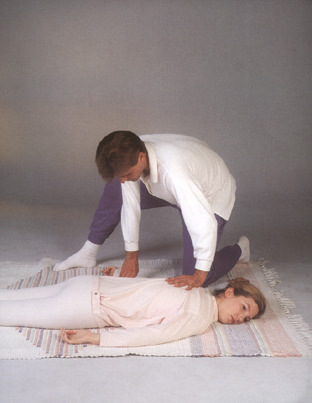
Contents
Part One

Heaven, Earth and Human Beings
Learning the Basics
Part Two

Pathways of Ki
Working on the Channels
Part Three

Versatility with Simplicity
Developing Your Technique
Foreword
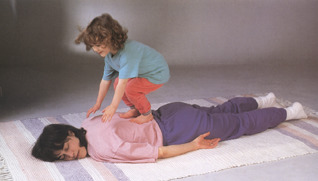
Western medicine provides many remedies for the diseases and problems we encounter in our daily lives, but by concentrating almost exclusively on illness and failing to address the essence of health, modern medicine falls far short of our needs.
Eastern medicine posits a life force or energy (referred to variously as Ki, Chi, or Prana) that defines us as living beings. The characteristics and condition of this vital energy comprise the essence of our state of wellness or illness. Thus Eastern medicine concentrates on maintaining Ki in an optimal conditionor restoring it back to such a conditionas the heart of the practice of medicine. The concept that we possess internal resources on which we can draw to sustain our health has slowly been gaining acceptance.
Through manual manipulation of the body in conjunction with the use of natural substances, such as herbs, Eastern medicine aims to uncover and utilize all the resources we have within ourselves that contribute to a state of wellbeing. Experience has shown that achieving this state produces long-term, stable results, rather than short-term, immediate relief.
Our search for health is a metaphor for our desire to understand ourselves and for that understanding to influence our lives in a positive, fulfilling manner. One method of having such an influence involves the use and practice of shiatsu.
Literally translated as finger pressure, shiatsu is a Japanese form of body work designed to heal and promote health by influencing and improving the state of Ki in the body. The principles of shiatsu conform to natural law by respecting and utilizing the relationship we have with nature. Shiatsu capitalizes on our innate response to touch, our capacity to intuit, and our ability to exercise mind over matter in pursuit of an ultimate condition of wellbeing. It is with this pursuit of wellbeing in mind that The Book of Shiatsu is written.
Those who wish to gain a basic knowledge of shiatsu for home use will find the chapters on technique thorough, yet simple enough to follow easily. For the more advanced student of shiatsu, this book can serve as a basic text that provides an understanding of shiatsu as a total system, including theory, technique, self-help exercises, and diagnosis. The chapter on Your Own Wellbeing is particularly helpful for strengthening techniques. This book is also an excellent reference resource for those who already have substantial knowledge of shiatsu. The chapters on diagnostic techniques are especially helpful.
Next page

